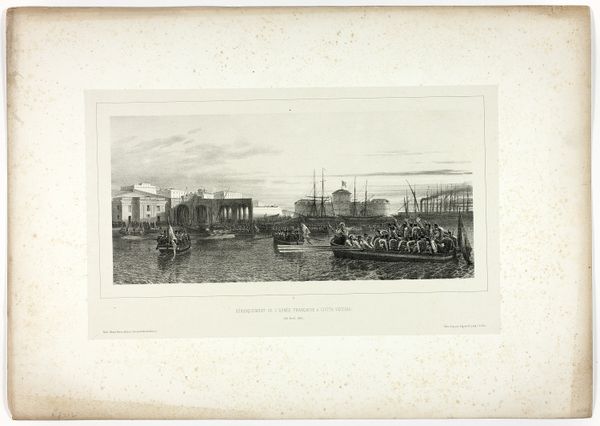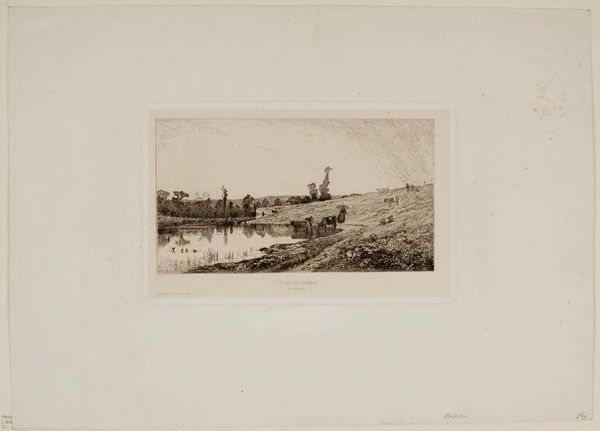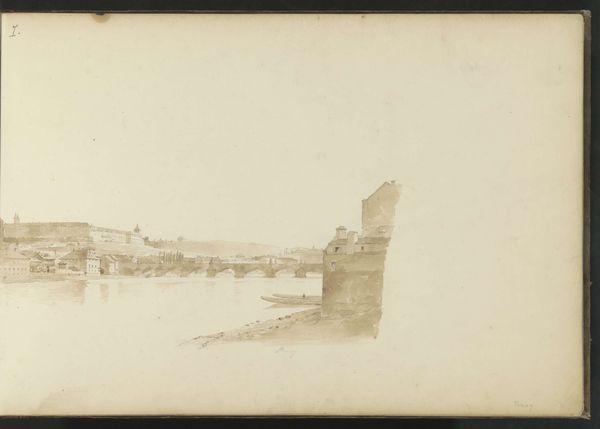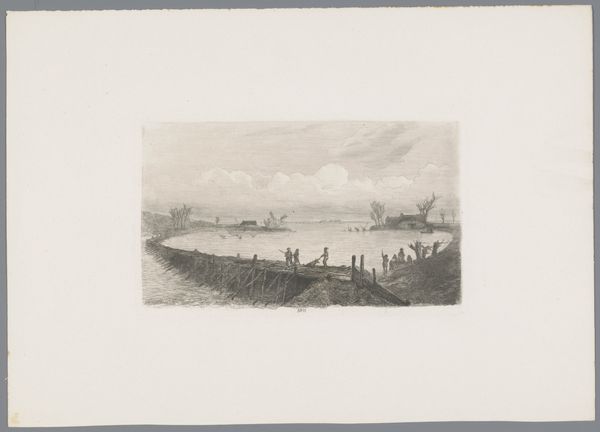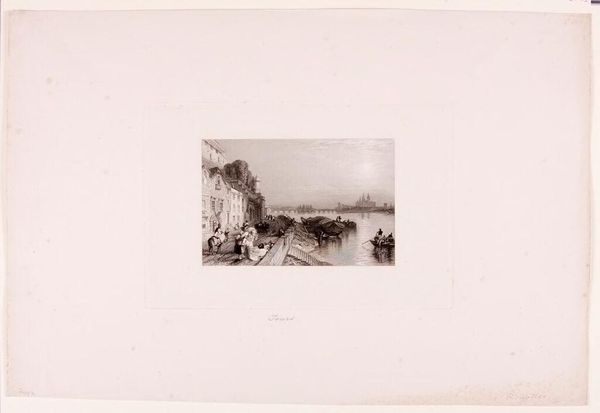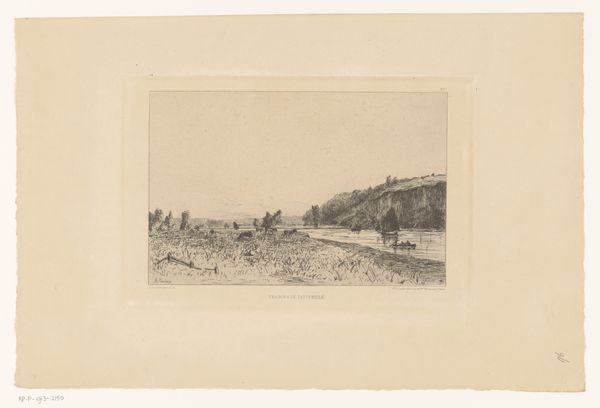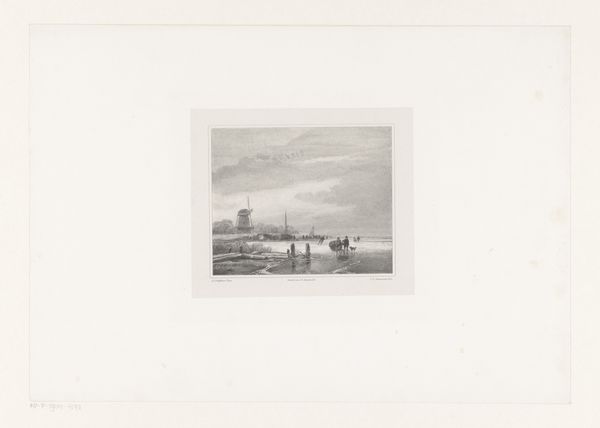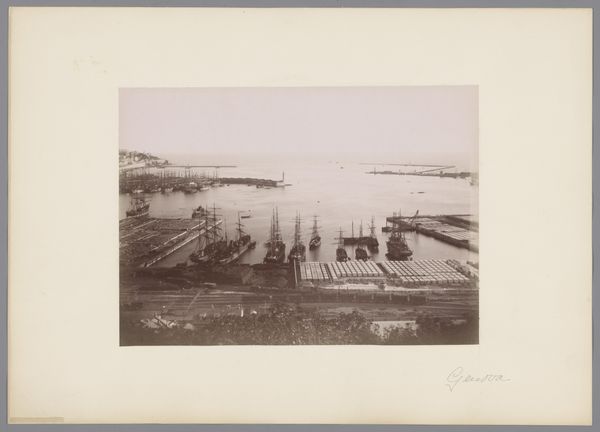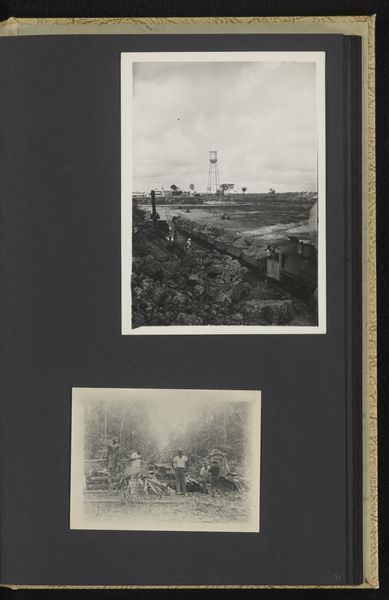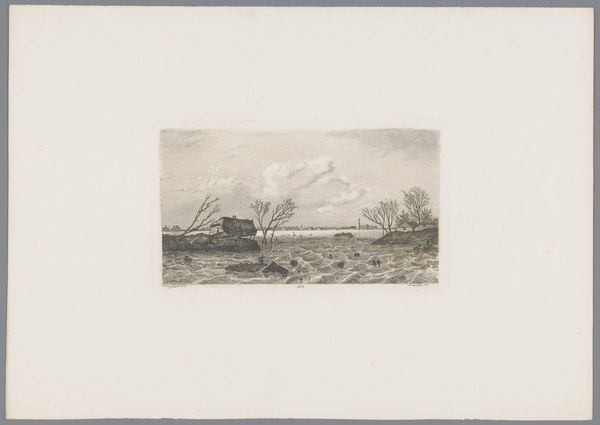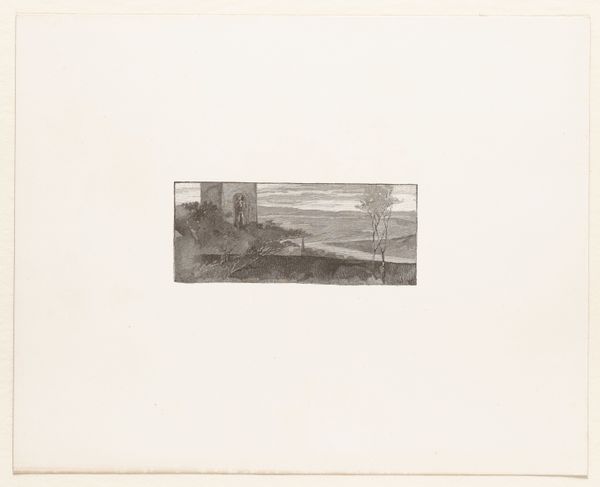
Opening the First Parallel, from Souvenirs d’Italie: Expédition de Rome 1853
0:00
0:00
Dimensions: 139 × 350 mm (image); 218 × 405 mm (primary support); 399 × 567 mm (secondary support)
Copyright: Public Domain
Curator: This lithograph by Auguste Raffet, created in 1853, is titled "Opening the First Parallel, from Souvenirs d’Italie: Expédition de Rome." It's a fascinating visual record of French military activity. Editor: It certainly is striking. The severe horizontal lines—the wall, the line of soldiers—create a very still, almost expectant mood. The column further punctuates that with its own verticality. Curator: Exactly, and situated in its historical context, this image encapsulates the power dynamics of mid-19th century Europe, specifically France’s role in Italian affairs and nation building, the military expansion that has had rippling effects on modern sociopolitical structure. How does it influence understandings of French nationalism at the time? What social and economic incentives or exploitations were made possible? Editor: If we disregard, for a moment, those political insinuations, I can’t help but focus on the artist’s formal considerations: the skillful way Raffet handles light and shadow in this composition, lending the piece a sense of depth and space, considering it is just shades of gray. And look how that column—perhaps representing civilization or victory—acts as a visual anchor for the eye. Curator: The column is, in essence, a phallic symbol, a classic representational component in the establishment of empires. Editor: That can also be read as an attempt to grapple with philosophical concepts, a visual semiotics in order to construct a structural understanding around the image, no? And even how that blank space operates with respect to a lack of structural definition—it allows, even, for a viewer to interpret based upon their experience and their structural relation to it, a way that does not dictate solely to that viewer! Curator: Yes, and to consider those broader structural positions we cannot only observe but must inquire and seek out active roles. As an object this print makes us consider how we engage with histories, how those are produced and made visible or invisibile across class, racial, or gender lines. What histories become privileged, repeated, taught, while other knowledges, understandings, or experiences remain suppressed. Editor: In this case it’s evident there are multiple paths towards visual understanding. Curator: Indeed. Through art we gain not just an aesthetic experience, but also a means of understanding and challenging our roles within those broader narratives.
Comments
No comments
Be the first to comment and join the conversation on the ultimate creative platform.
